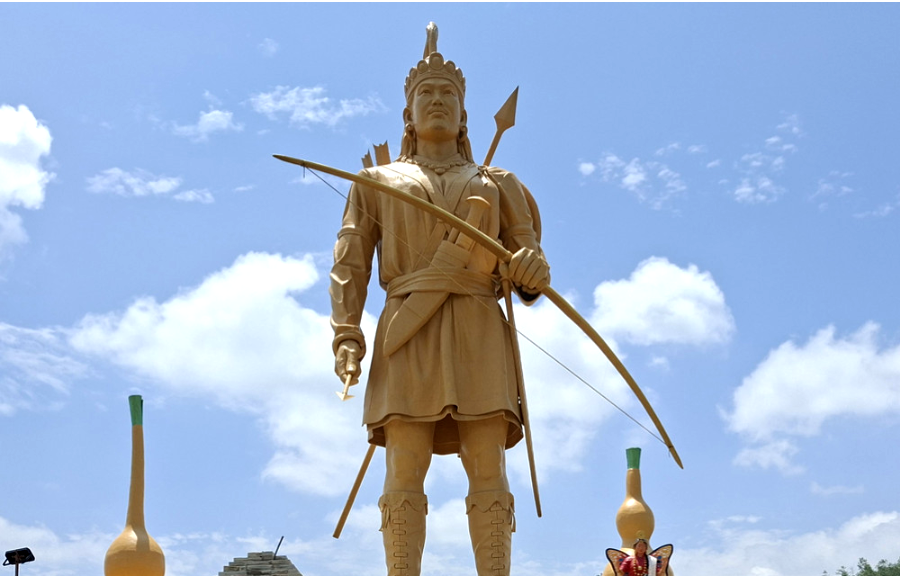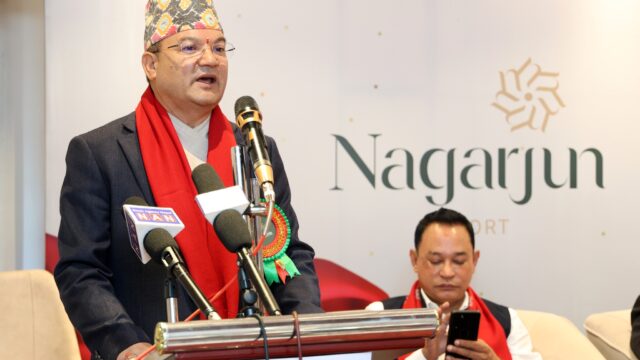A significant step toward preserving the cultural identity of the Kirat community has been achieved with the construction of Yalambar Park in Diktel Rupakot Majhuwagadhi Municipality-14, Khotang. The newly built park features a colossal 110-foot tall bust of King Yalambar, the legendary first king from the Lichchhavi era, and is claimed to be the tallest and largest bust statue in the world to date.
Monumental Achievement in Kirat Heartland
The park, located in Panchadobato, Buipa, spans across 30 ropani (approximately 1.5 hectares) of public land and stands as a monumental tribute to King Yalambar, a revered figure in Kirat mythology and history. Buipa in Khotang is widely recognized as the central hub of the Kirat region, which makes it a fitting site for such a historical installation.
Joint Investment of Rs 140 Million
The construction of Yalambar Park is a collaborative effort between the Koshi Province government and the Diktel Rupakot Majhuwagadhi Municipality. Out of the total investment of Rs 140 million, 70 percent of the funding was provided by the provincial government, while the remaining 30 percent was contributed by the local municipality. This joint effort reflects a shared commitment to cultural preservation and sustainable tourism development.
Tourist-Friendly Features with Modern Amenities
Ward Chairperson Diensh Rai shared details about the park’s features, emphasizing that it is not just a site for cultural reverence but also a modern recreational facility. “The spacious Yalambar Park will offer free WiFi, a coffee outlet, and fast food services to visitors,” said Rai. “The park is equipped with all essential amenities to make it tourist-friendly. At its heart stands the enormous bust of King Yalambar, which has already become a center of attraction for both domestic and international visitors.”
Constructed using advanced technology and designed with a focus on both cultural significance and tourism promotion, Yalambar Park is anticipated to become a landmark destination in eastern Nepal.
Preserving Kirat History through Tourism
Deputy Mayor Bishan Rai highlighted the broader objective behind the construction of Yalambar Park. “The park is more than just a statue, it is a symbol of our efforts to preserve the legacy of the Kirat people and promote it through tourism,” said Rai. “King Yalambar is a crucial historical figure, and this park ensures his contribution to our history is remembered for generations to come.”

Yalambar is widely recognized in historical and mythological narratives as the first king of the Kirat dynasty and is believed to have played a pivotal role during the early Lichchhavi period in Nepal. By immortalizing him in such a grand structure, the park serves both as an educational site and a tourism hotspot.
Expected Impact on Local Economy and Tourism
The establishment of such a landmark is expected to generate positive ripple effects on the local economy. As the tallest bust statue globally and an emerging tourism site, Yalambar Park is anticipated to draw a significant influx of tourists to the Khotang region. This will likely stimulate the hospitality, transportation, and local handicraft industries in the area.
Additionally, the park is strategically designed to attract a diverse range of visitors including students, cultural researchers, history enthusiasts, and adventure tourists looking to explore the lesser-known yet culturally rich destinations of Nepal.
Future Plans and Conservation Efforts
According to municipal officials, further infrastructure developments are planned in and around the park to accommodate increasing tourist traffic and ensure proper conservation of the site. Landscaping, guided tour facilities, souvenir shops, and cultural programs focusing on Kirat traditions are among the proposed expansions.
The municipal government also plans to work with travel agencies, domestic airlines, and tourism promoters to include Yalambar Park as part of heritage and cultural tourism circuits in eastern Nepal.
With its towering statue, modern amenities, and deep cultural significance, Yalambar Park stands as a shining example of how local history, heritage conservation, and tourism can converge to build sustainable and pride-inducing landmarks for future generations.






